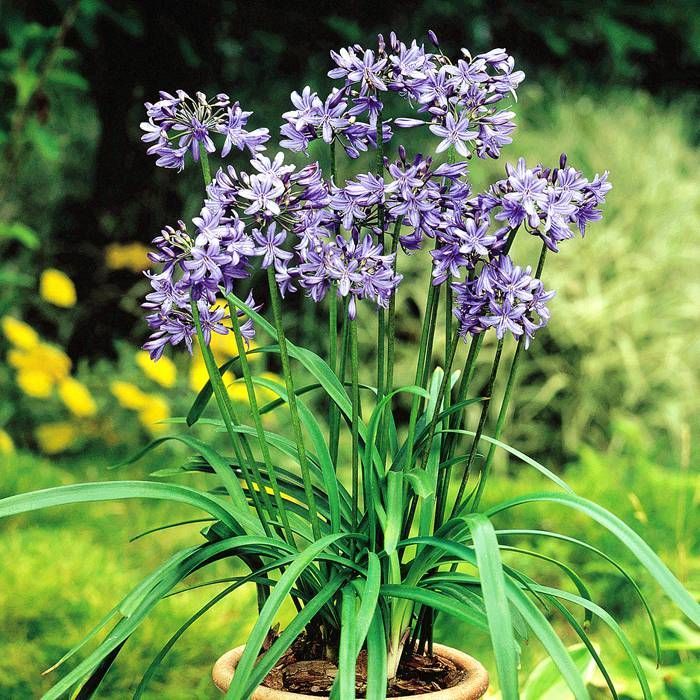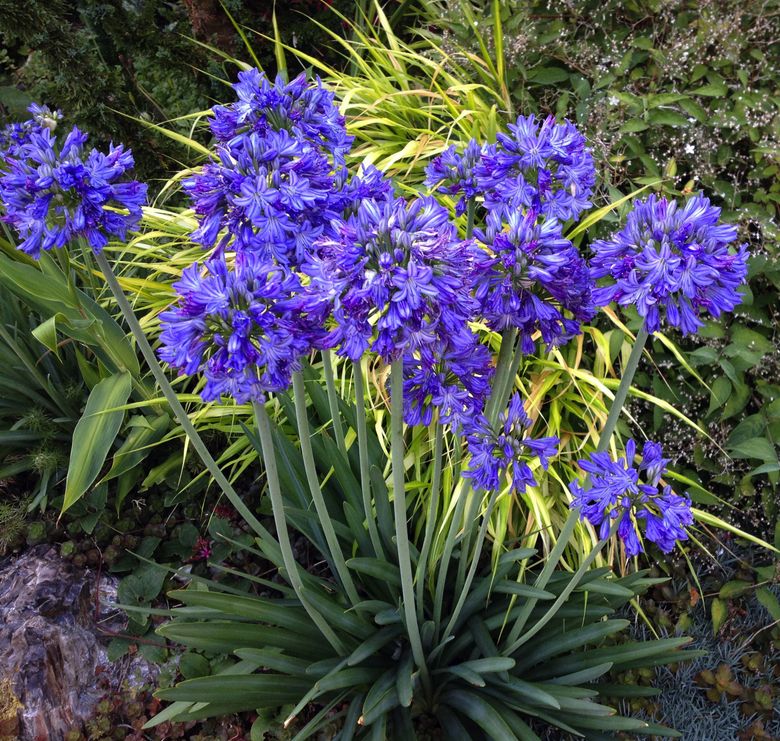Mastering the Art of Agapanthus Treatment: Necessary Actions for Healthy And Balanced Growth and Dynamic Blooms
In the world of cultivation, the farming of agapanthus stands as a rewarding venture for those who look for to support these classy flowering plants. With their striking blooms and stylish vegetation, agapanthus has actually captured the attention of garden enthusiasts worldwide. Nevertheless, accomplishing optimum growth and vivid blossoms requires a nuanced technique that encompasses numerous necessary actions. From selecting the best range to grasping pruning methods, the journey towards growing growing agapanthus plants is multifaceted and holds the vital to opening the complete possibility of these agricultural treasures.

Choosing the Right Agapanthus Range

When selecting the right Agapanthus variety for your yard, take into consideration elements such as climate suitability, bloom color, and development routine. Additionally, think about the environment in your region to guarantee the Agapanthus selection you select can grow in your details problems. Comprehending the growth practice of various Agapanthus selections is essential for appropriate positioning within your yard.
Suitable Growing Problems
Considering the ideal environmental demands is essential for effective Agapanthus growing. Agapanthus thrives in well-draining soil with a somewhat acidic to neutral pH level. When planting, select a place that obtains full sunshine to partial shade. In hotter climates, giving some afternoon color can avoid scorching of the fallen leaves. Agapanthus plants are sensitive to chilly temperatures and should be shielded from frost during winter season months.
To guarantee healthy development and dynamic blooms, plant Agapanthus bulbs at a deepness of concerning 2-4 inches and area them 8-12 inches apart. Mulching around the base of the plants assists keep wetness and suppresses weed development.
Watering and Feeding Tips
Maintaining proper wetness levels and supplying necessary nutrients are key aspects in the treatment regimen for Agapanthus plants. When it comes to sprinkling Agapanthus, it is important to strike an equilibrium. These plants favor constantly damp dirt but are susceptible to root rot if overwatered.
Fertilizing Agapanthus is vital for advertising healthy growth and prolific blooms. Apply a balanced fertilizer, such as a 10-10-10 formula, in the very early spring as brand-new growth emerges. By look here adhering to these watering and feeding ideas, you can ensure your Agapanthus plants thrive and produce vibrant, long-lasting blooms.
Pruning Strategies for Agapanthus
Pruning Agapanthus plants at the proper times and with correct strategies is essential for keeping their health and wellness and advertising ideal growth and blooming. The optimal time to trim Agapanthus is in late winter season or very early spring before new development emerges. Beginning by getting rid of any type of yellowing or dead fallen leaves near the base of the plant. Cut them as close to the ground as feasible without harming the emerging internet shoots.
Deadheading invested blossoms can also reroute the plant's power into creating even more blooms instead than establishing seeds. If you want to collect seeds for breeding, leave some flowers to mature and dry on the plant.
Keep in mind to utilize tidy, sharp tools to make exact cuts and reduce the danger of presenting diseases. Agapanthus. Regular trimming will certainly help keep your Agapanthus looking cool and healthy while guaranteeing a plentiful display of stunning blooms
Handling Common Parasites and Conditions
After guaranteeing correct trimming techniques for Agapanthus, it is crucial to resolve usual parasites and illness that can influence the health and vitality of these plants. One usual parasite that impacts Agapanthus is the Agapanthus gall midge.
Additionally, Agapanthus plants can endure from origin rot if they are grown in inadequately draining pipes soil. By being cautious and taking punctual activity against diseases and insects, you can help your Agapanthus plants thrive and produce vivid flowers. Agapanthus.

Conclusion
To conclude, mastering the art of agapanthus care involves picking the appropriate variety, supplying suitable planting conditions, proper watering and fertilizing, appropriate pruning strategies, and attending to typical parasites and illness. By adhering to these vital steps, you can make certain healthy and balanced development and vibrant blooms for your agapanthus plants. Bear in mind to regularly keep an eye on and preserve your plants to advertise their total health and pop over to this web-site long life.
To make certain healthy and balanced growth and vivid blossoms, plant Agapanthus light bulbs at a deepness of about 2-4 inches and room them 8-12 inches apart. By complying with these watering and feeding tips, you can guarantee your Agapanthus plants flourish and produce lively, long-lasting flowers.
One common bug that impacts Agapanthus is the Agapanthus gall midge. In addition, Agapanthus plants can endure from origin rot if they are planted in improperly draining pipes soil. By following these essential steps, you can guarantee healthy growth and lively blooms for your agapanthus plants.